Land Invertebrates
Media
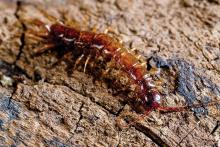
Species Types
Scientific Name
Hundreds of species in North America north of Mexico
Description
Centipedes are familiar to anyone who has overturned rocks and logs, sifted through leaf litter, or dug in the soil. Learn more about Missouri's members of class Chilopoda.
Media
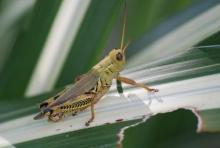
Species Types
Scientific Name
Melanoplus differentialis
Description
The differential grasshopper is familiar to most Missourians. Originally it lived only in wet meadows and creek bottomlands, but with the spread of farms, it has become a pest of many food crops.
Media
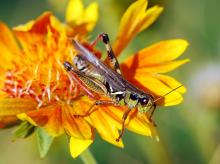
Species Types
Scientific Name
Melanoplus femurrubrum
Description
The red-legged grasshopper is a type of short-horned grasshopper common in Missouri. It reaches about 1 inch in length and is often seen flicking or flying away in open habitats.
Media
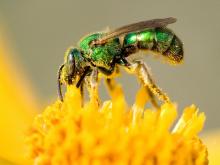
Species Types
Scientific Name
More than 500 species in North America north of Mexico
Description
Missouri has many species of halictid bees, or sweat bees. Some are solitary, but a number show different levels of social behavior. They're named for their attraction to perspiration, which offers them precious moisture and salts.
Media
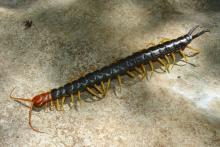
Species Types
Scientific Name
Scolopendra heros
Description
The bright colors of the giant redheaded centipede have a message for you: Handle with great care! It’s of the few centipedes in our state capable of inflicting a painful, venomous bite.
Media
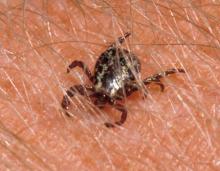
Species Types
Scientific Name
Three common Missouri species
Description
Ticks drink the blood of humans and other mammals. Because they can carry serious, sometimes deadly diseases, it's important to learn about ticks and how to protect yourself from their bites.
Media
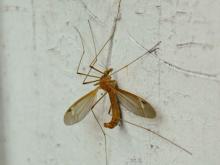
Species Types
Scientific Name
More than 500 species in North America north of Mexico
Description
Many people are frightened of crane flies, which resemble huge mosquitoes. But crane flies don’t bite or suck blood. In fact, as adults, most of them don’t have mouths at all!
Media

Species Types
Scientific Name
Nearly 200 species in North America north of Mexico
Description
Assassin bugs are usually black or brown, with an elongated head bearing a single, clawlike tube used for piercing and injecting venom into their prey. They are common in Missouri.
Media
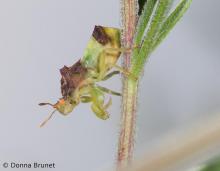
Species Types
Scientific Name
Phymata spp. and others in subfamily Phymatinae (ambush bugs)
Description
Ambush bugs are a subfamily of assassin bugs. They’re chunky, small insects with powerful grasping forelegs. They hide motionless in flowers waiting for prey to venture near.
Media

Species Types
Scientific Name
More than 5,000 species in North America
Description
Most ichneumon wasps are harmless, although the long ovipositor of the female is intimidating. Their larvae live as parasites inside caterpillars and other larval insects.
See Also



Media

Species Types
Scientific Name
Cisseps fulvicollis
Description
The yellow-collared scape moth is more often “orange-collared.” And whether you think it looks more like a firefly or a wasp, it’s still a moth!
Media

Species Types
Scientific Name
Nearly 150 species in North America north of Mexico
Description
Slim, delicate plume moths are instantly recognizable by their T-shaped silhouette, long legs, and muted shades of tan and brown. It can be hard to separate the various species.
Media

Species Types
Scientific Name
Pyrrharctia isabella
Description
Not many people know the adult Isabella tiger moth when they see one, but we’re all acquainted with its caterpillar, the woolly worm, or woolly bear.
About Land Invertebrates in Missouri
Invertebrates are animals without backbones, including earthworms, slugs, snails, and arthropods. Arthropods—invertebrates with “jointed legs” — are a group of invertebrates that includes crayfish, shrimp, millipedes, centipedes, mites, spiders, and insects. There may be as many as 10 million species of insects alive on earth today, and they probably constitute more than 90 percent all animal species.





















